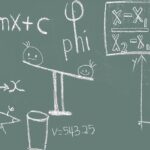Erasmus Samuel A.O. Amukun was born on November 27th 1940 in Ngora in Kumi in Eastern Uganda. He is best known for his exploits as a collegiate and international sprinter and as a professional geologist. He represented Uganda at the British Empire Commonwealth Games, at the Olympic Games, and at the East and Central African Games. Amukun is also credited for having beaten Kenyan sprint legend and future Commonwealth Games (1962, Perth) double-sprint gold-medallist Seraphino Antao in a race.
In 1958, at the Commonwealth Games in Cardiff in Wales (July 17-26, 1958), teenager Amukun did not advance beyond the fifth of twelve preliminary heats in the 100 yards sprint. In the heat 5 he finished in 9.9 seconds, in fourth place. But his team-mate Benjamin Kiyini Nduga, who had finished ahead of Antao, qualified for and moved on to the semi-finals in which he would be eliminated. In the 220 yards, Amukun was second in the eighth (22.14) of nine heats of the preliminary round. Later, in the fourth of six heats of the quarter-final round for which he had qualified, he was eliminated after finishing third in 22.1. But in the 4×100 yards, the Uganda relay team which Amukun was part of, finished sixth in the finals (42.1). Also on the Uganda relay team were Ben Nduga, Ignatius Okello, and S. Bwowe. They had moved on to the finals after finishing in third place (42,47) in the first round which was a semi-final.
Amukun, aged 19, was the captain of the Uganda team at the 1960 Olympics in Rome. In the young Uganda team, Amukun was the youngest, and 21 year-old Aggrey Awori was the oldest.
On August 31st 1960, Erasmus Amukun competed in the fourth of nine heats in the first round series of the 100m in which the fastest three in each heat would move on to the next round–the quarter-finals. He finished third in 10.80, qualifying for the next round. Notably, in this first round, fellow Ugandan 21 year-old Aggrey Awori (Awoori) who competed in the third heat was eliminated after finishing fifth (11.09). Kenyan Seraphino Antao (10.64) comfortably finished first in the first heat of this preliminary round and thus moved on to the quarter-finals.
In the quarter-finals held later in the day, Amukun was placed to run in the third of the four heats. He would finish fourth (10.75), and become eliminated since he was not among the top three finishers in the heat. But this would be the fastest he would ever officially run in the 100m. Antao finished third in the fourth heat (10.61) and moved on to the semi-finals. On September 1st Antao finished sixth (10.72) in the second of two semi-final heats, and become ineligible for the finals.
The 200m competition was started on September 2nd, and Amukun was placed in the fifth heat of the dozen heats of the first round in which the top two finishers of each heat would move on to the quarter-final round. Amukun finished second (21.38) and moved on to the quarter-finals. This would officially be his life-time best in the 200m. Meanwhile, Antao won in the eleventh heat (21.44), easily making it to the next round.
In the 200m quarter-finals held later that day, Amukun was placed in the first of four heats. He finished fourth (21.47) and was eliminated from advancing to the semi-finals since he was not among the top three finishers in the heat. Also coming in fourth, but in the second heat of the quarter finals was Seraphino Antao (21.43) who was also eliminated.
Uganda also competed in the 4x100m relay scheduled for September 7th 1960. There were four heats in the first round, and Uganda finished in fifth in 41.90, but had already been disqualified. In some of the other heats, Poland and France were also disqualified. The Uganda relay team had also included Aggrey Awori, Jean Baptiste Okello, and Gadi Ado.
In 1961 at the East and Central African Championships at the venue Nakuru in Kenya, Erasmus Amukun had won in the 440 yards in 48.0 seconds. Samuel Amukun was also part of the Uganda 4×100 yards relay team that won in 43.1 in Nakuru.
Near the end of 1961, Amukun successfully completed the 2-year Cambridge Advanced Secondary School Certificate, majoring in the sciences, at King’s College Budo (Buddo) near Kampala where he resided in Mutesa House.
Sam Amukun competed in the annual IC4A (or ICAAAA, (Intercollegiate Association of Amateur Athletes of America) which is a men’s competition held at different colleges every year. Amukun was then an undergraduate student at Colgate University in Hamilton in New York. At the IC4A in Villanova in Pennsylvania in 1964 at the end of May, Amukun won in the 100 yards in 9.7. It was a photo-finish with Villanova University’s Earl Horner, and it was decided that Amukun with his chest forward on the tape had won (Green 1964: 5).
At the summer Olympics held in Tokyo in 1964, 23 year-old Amukun would represent Uganda in the 200m, and in the 4x100m relay. Placed in the second heat of eight heats of the preliminary rounds, Amukun finished fifth (21.55) on October 16th and was eliminated since he was not among the top four finishers in the heat. Kenyan Antao advanced to the quarter-final heats after finishing second in the third heat (21.52). Antao would, in the quarter-finals, later be eliminated.
On October 20th, the 4x100m Uganda relay team consisting of Awori, Amukun, James Odongo, and Amos Omolo finished sixth (41.4) in the third of the three first-round heats; so the team did not advance to the semi-finals.
Revenge was sweet at the annual IC4A championships held in 1965 in Brunswick, New Jersey at the end of May. Here Horner of Villanova who had lost to Amukun of Colgate in the 100m in 1964, won in both short sprints, with Amukun finishing third in the 100 yards sprint. But earlier in the same year, at the beginning of May, the Ugandan Olympian had triumphed in both short sprints at the track meet whereby the Raiders of Colgate were pitted against Syracuse University (Orange) at the Archbold Stadium in Syracuse. Also, in mid-April at the Cornel University vs. Colgate meet, Amukun the meet record-holder was beaten into second place in both short sprints by Cornel’s Charles Blaugrund (9.9 in the 100 yards) second effort in the 100-yd. dash was enough to beat Colgate’s Sam Amukun, the meet record holder a favorite in the event. Amukun had covered the distance in 9.6 seconds the week before. In the 220 yard sprint, again Blaugrund (22.5) was followed by the Ugandan at the finishing line.
Just before Amukun died in 1998, aged 57, he was the exploration manager for Northwest Explorations, in Canada. Amukum obtained the bachelor of science degree in chemistry at Colgate in 1966 while on track-and-field scholarship. He would acquire the master’s degree in geology at the University of Manitoba in 1969. The title of his master’s thesis is: “Petrography of the Gold-Bearing Vein Rocks from Bissett Area, Southeastern Manitoba.”
Amukun returned to Uganda to work at the Kilembe mine of Falconbridge but fled to Canada with his wife in 1972 given the insecurity and unease about the dictatorial military regime of Idi Amin.
After his death it was chronicled that after leaving Uganda, for 25 years, Amukun worked as a field geologist for the Ontario Geological Survey, Noranda and Urangesellschaft, and later started his consulting business. In 1996, he joined Northwest Explorations and became exploration manager for the company’s Guyanese projects. He was a member of the Canadian Institute of Mining, Metallurgy and Petroleum, the Prospectors and Developers Association of Canada, and the Geological Association of Canada.
Samuel Erasmus Amukun compiled and authored extensively and his books include: “Precambrian Geology, Little Marshall Lake Area” (1989), “Geology of the Klob Lake Area, District of Thunder Bay” (1984), “Geology of the Willet Lake Area, District of Thunder Bay” (1979), “Geology of the Tashota Area, District of Thunder Bay” (1977), “Geology of the Gledhill Lake Area, District of Thunder Bay” (1980), “Geology of the Conglomerate Lake Area, District of Thunder Bay” (1980), and “Willet Lake, Thunder Bay District” (1979).
Amukun had been married to Daphne for 29 years, and he was also survived by daughter Nasheba and sons Settu and Mwenu.
Works Cited
Green, Bob (AP). “Villanova is IC4A Titlist Again; G-Burg Entry Fourth.” Gettysburg Times, 1 June 1964: 5.



